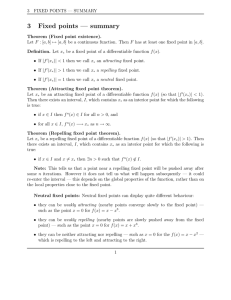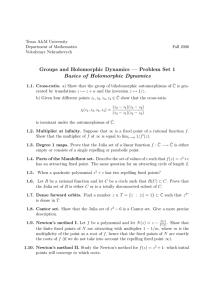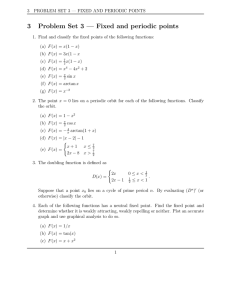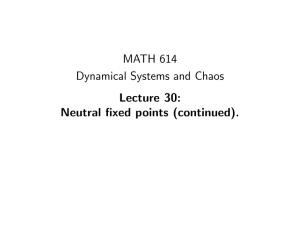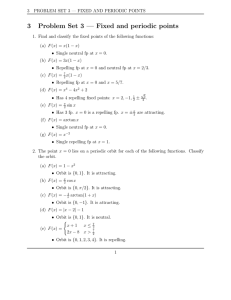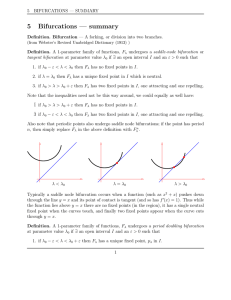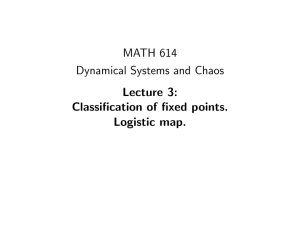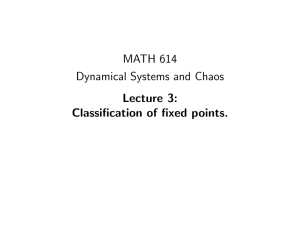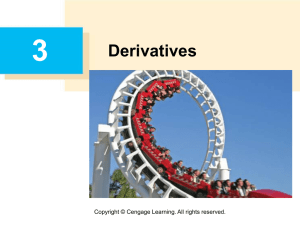This week we began with a review of the equation xn+1 = Axn – h
advertisement
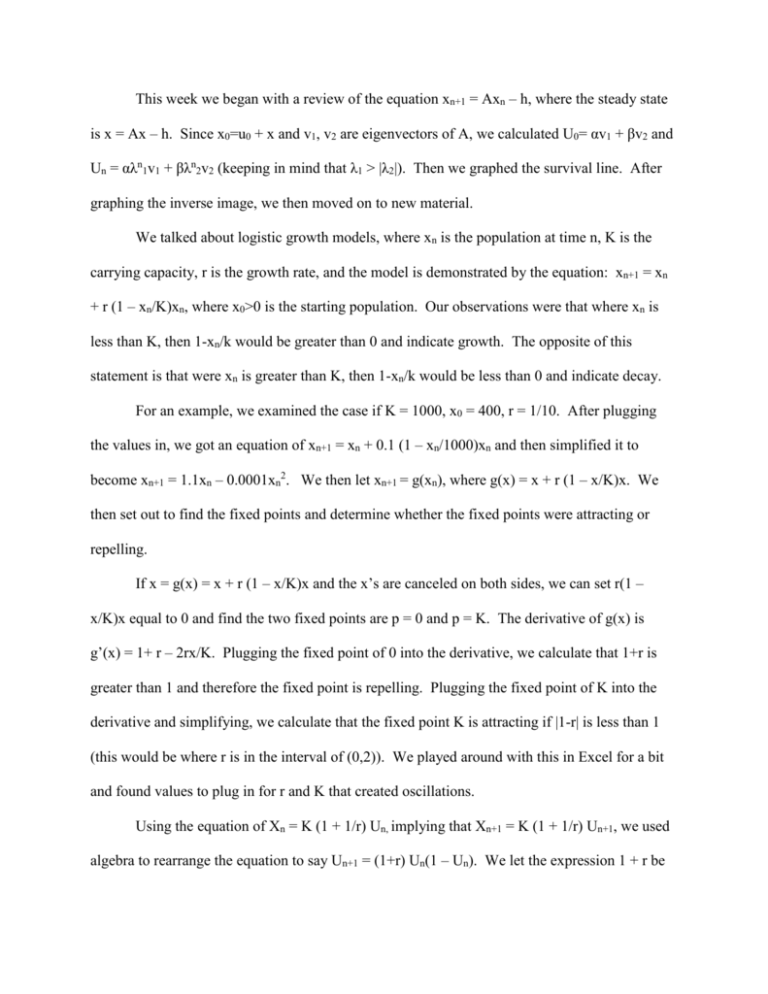
This week we began with a review of the equation xn+1 = Axn – h, where the steady state is x = Ax – h. Since x0=u0 + x and v1, v2 are eigenvectors of A, we calculated U0= αv1 + βv2 and Un = αλn1v1 + βλn2v2 (keeping in mind that λ1 > |λ2|). Then we graphed the survival line. After graphing the inverse image, we then moved on to new material. We talked about logistic growth models, where xn is the population at time n, K is the carrying capacity, r is the growth rate, and the model is demonstrated by the equation: xn+1 = xn + r (1 – xn/K)xn, where x0>0 is the starting population. Our observations were that where xn is less than K, then 1-xn/k would be greater than 0 and indicate growth. The opposite of this statement is that were xn is greater than K, then 1-xn/k would be less than 0 and indicate decay. For an example, we examined the case if K = 1000, x0 = 400, r = 1/10. After plugging the values in, we got an equation of xn+1 = xn + 0.1 (1 – xn/1000)xn and then simplified it to become xn+1 = 1.1xn – 0.0001xn2. We then let xn+1 = g(xn), where g(x) = x + r (1 – x/K)x. We then set out to find the fixed points and determine whether the fixed points were attracting or repelling. If x = g(x) = x + r (1 – x/K)x and the x’s are canceled on both sides, we can set r(1 – x/K)x equal to 0 and find the two fixed points are p = 0 and p = K. The derivative of g(x) is g’(x) = 1+ r – 2rx/K. Plugging the fixed point of 0 into the derivative, we calculate that 1+r is greater than 1 and therefore the fixed point is repelling. Plugging the fixed point of K into the derivative and simplifying, we calculate that the fixed point K is attracting if |1-r| is less than 1 (this would be where r is in the interval of (0,2)). We played around with this in Excel for a bit and found values to plug in for r and K that created oscillations. Using the equation of Xn = K (1 + 1/r) Un, implying that Xn+1 = K (1 + 1/r) Un+1, we used algebra to rearrange the equation to say Un+1 = (1+r) Un(1 – Un). We let the expression 1 + r be represented by ρ and then Un+1 = ρ Un(1 – Un) = g(Un), with the iteration function of g(u) = ρ u (1- u). We graphed the function g(u) (and let x represent u) as a family of parabolas and we also graphed y = x. Using this graph, we looked for fixed points. By setting g(x) equal to x, we found that 1 = ρ(1 – x) and therefore the points 1-1/ρ and 0 are fixed points. After finding the derivative of g(x) to be ρ - 2ρx and plugging in the two fixed points, point 1 – 1/ρ is attracting if 1<ρ<3. The point 0 turns out not to be of use to us, because this would imply a negative r and therefore a declining population. The values of ρ = 2, 2.5, and 3 all were shown to be attracting (when the values were put into the equation of p = 1 – 1/ρ). When we used a value of ρ that was greater than 3, we found that the point p is repelling and the graph cycles from the same points on the function and the y=x line. This cycle implies that every other term approaches limit #1 and every other term approaches limit #2. Using the iteration function of h(x) = g(g(x)), h(p) = g(g(p)) = g(p) = p, where p is a fixed point of g(x). The fixed points of g(x) are also fixed points of h(x), but h(x) may have other fixed points as well. In our case, h(x) = ρ2x(1 – x)(1 – ρx(1 – x)). For homework, we are to find out what the fixed points are and if they are attracting or repelling.
